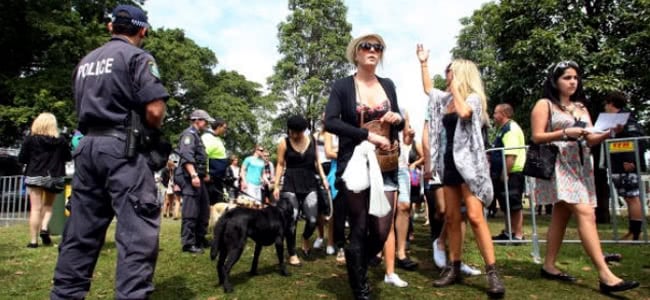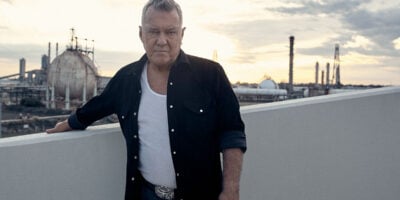Alright, people. Enough is enough. It’s one thing to report about a major drug bust, a death at a music festival (drug-related or otherwise), or to have a productive discussion about the prevalence of drugs at music festivals and whether they have turned the Australian festival space deadly, but can we all agree to stop reporting on complete non-stories?
Which, you ask, dear readers? Take your pick, really. But let’s take the Sydney Morning Herald’s recent write-up on Canberra’s inaugural Spilt Milk festival. More than 20,000 punters attended the debut of Spilt Milk and police praised the conduct of the vast majority of the attendees, despite confiscating “a small amount of drugs”.
To be fair, most of the Sydney Morning Herald‘s report about Spilt Milk is about police praising the festival-goers and includes quotes from festival organisers declaring their satisfaction with how the event went down and how their punters behaved. So what was the headline? “Canberra police seize drugs as thousands flock to Spilt Milk music festival”.
It’s crafty journalism. We actually don’t know how many drugs were seized during the event, as the ACT Police media release did not include that information (and that’s pretty much all the report had to go on), stating only that police recovered “a small amount of drugs”.
But a small amount of drugs isn’t much of a story, so disregard the minuscule amount of drugs that were actually found and just say that drugs were seized as “thousands” flocked to the event. The juxtaposition of the words “drugs” and “thousands” will lead anyone who catches the headline in their newsfeed to assume it must’ve been an Escobarian haul of narcotics.
Of course, Spilt Milk wasn’t the only Aussie festival to cop this kind of treatment from the mainstream media. Take Subsonic, an Aussie festival that takes place annually in the Hunter Valley, for example. News.com.au syndicated a report from the Australian Associated Press about 20 people who were arrested for drug possession at the event.
Subsonic, it should be noted, has an attendance of a few thousand, and we’re willing to wager that if you pulled a random sample of about 4,000 or so people, some of them would be in possession of drugs and may even have drugs in their systems. Speaking of having drugs in your system, that’s an interesting semantic argument.
Last year, Strawberry Fields made headlines after 56 people were supposedly caught driving high on the way to the festival. But as Tone Deaf later reported, this wasn’t actually the case. See, the tests police use to determine whether someone is driving whilst intoxicated gauge whether you have traces of illicit substances in your system.
The rub is that you could have traces of illicit substances in your system even if you ingested them days ago and are no longer experiencing the intoxicating and impairing effects of the substance. For example, some studies have found THC, the active ingredient in cannabis, can linger in the body for up to 100 days after ingestion.
Now it would likely take a rigorous test to actually find these THC metabolites 100 days after taking a hit off a joint and the test administered by police during RBTs likely wouldn’t pick them up, but there have been cases where drivers are hit with charges for driving perfectly sober days after smoking marijuana.
But this didn’t really matter to most of the major media outlets who reported on the dozens of ‘intoxicated’ drivers who were caught on the way to Strawberry Fields. And you can’t really blame them, it’s a juicy story, the kind that media outlets leap at. Sadly, we at Tone Deaf were no different and it was only after speaking to medical professionals that we were forced to change our tune.
In fact, we totally reassessed the way we chose to report on stories regarding drug busts at music festivals.
Take a look at most of the reports you find out there in the media. Go ahead, type ‘drug festivals’ into Google News, but try an experiment. Instead of simply reading the headline and writing off the Australian festival space as a illegal substance-ridden drug hive, do the math and compare how many people get caught with drugs at an event with how many people attended overall.
Sure, not everyone who takes drugs into a festival gets caught, but is 20 punters getting caught at a festival with an attendance of thousands really that much of a story? And if it is, why don’t we see reports about drug arrests and people being taken into custody for intoxication at other events? There’s so much cocaine at the Melbourne Cup, Vice were able to run a feature about it.
Take a look at the media release page for any police force in the country, be it Victoria, the ACT, or NSW, and you will find dozens of reports about drugs busts, arrests for possession, and various other incidents related to drugs which did not happen to take place at a music festival. But hey, why would you report on a bunch of kids receiving cannabis cautions at a train station?
The only difference between this example and the Subsonic or Spilt Milk stories are that drug arrests at music festivals make for sexy story fodder. But whilst the media outlets enjoy the clicks, these non-stories paint a biased and inaccurate profile of Australia’s festival scene and undermine the efforts of organisers and industry members to police their events and protect their punters.

































